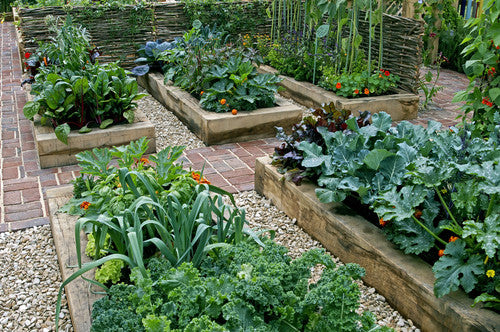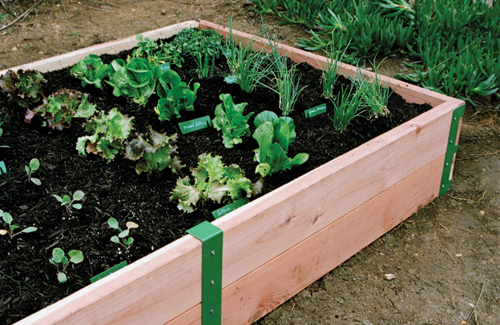Essential Care Strategies for Homestead Gardening
Essential Care Strategies for Homestead Gardening
Blog Article
Learn How to Grow a Thriving Horticulture Setting for All Skill Degrees
Developing a prospering yard is a diverse endeavor that can be embraced by individuals at any type of skill degree. By checking out crucial elements such as soil wellness, ideal plant choice, and seasonal care regimens, one can create a sustainable gardening method that yields satisfying outcomes. Comprehending how to assess and boost your yard room lays the foundation for success. The details of carrying out these concepts commonly present obstacles that can prevent also the most enthusiastic amateur. What methods can be used to conquer these challenges and foster an absolutely growing environment?
Understanding Your Yard Space
In the realm of gardening, comprehending your yard space is extremely important to cultivating a flourishing landscape (Homestead Gardening). The initial action in this endeavor includes examining the details characteristics of your plot. Aspects such as soil make-up, sunshine exposure, and drainage play important duties in determining the viability of your yard for various sorts of plants
Begin by carrying out a soil test to examine pH levels and nutrient material, which will notify any type of needed changes. Additionally, observe just how much sunlight your area gets throughout the day. Different plants have varying light demands; some grow completely sun, while others choose partial or complete shade.

Finally, review the available room and strategy appropriately. This includes considering plant heights and spread to guarantee adequate room for growth without overcrowding. By getting a detailed understanding of your garden area, you established the structure for an effective horticulture experience.
Picking the Right Plant Kingdoms
Picking the right plants for your yard requires careful consideration of various factors, consisting of climate, soil conditions, and personal preferences. Beginning by examining your neighborhood climate, as specific plants grow specifically temperature ranges and climate patterns. Tropical plants might not make it through in cooler regions, while hardy perennials can stand up to harsh winters months.

Consider your individual preferences, consisting of aesthetic charm and upkeep levels. Make a decision whether you prefer vibrant flowers, rich foliage, or edible crops. Furthermore, factor in the moment and effort you agree to purchase plant care, as some ranges demand more attention than others.
Lastly, believe about the garden's design and light direct exposure. Sunshine patterns throughout the day will influence your selections-- some plants require full sun, while others flourish in color. By attentively assessing these aspects, you can develop a efficient and harmonious garden customized to your setting and preferences.
Essential Gardening Tools
A fully equipped gardener can dramatically boost their horticulture experience and end results. Essential gardening tools are fundamental to cultivating a successful garden, despite ability degree. A tough spade is very useful for excavating and transforming soil, while a trowel allows for precise growing and transplanting of smaller plants.
Trimming shears are crucial for preserving plant health by removing disordered or dead branches, advertising far better air flow and growth. Furthermore, a hand rake works for clearing particles and aerating the soil, making certain optimum conditions for plant roots.
Gardening handwear covers safeguard hands from blisters, chemicals, and thorns, making them a vital accessory. A watering can or tube with an adjustable nozzle guarantees that plants receive adequate moisture without overwatering.
Finally, consider spending in a durable wheelbarrow for transporting dirt, plants, and tools around the yard efficiently. By assembling a high quality toolkit that consists of these essential things, gardeners can why not look here take on various jobs with confidence and convenience, leading the way for a flourishing horticulture environment. Keep in mind, the right devices not just enhance performance but additionally enhance the general satisfaction of the gardening process.
Soil Prep Work and Maintenance
Quality soil is the structure of a successful garden, making correct prep work and maintenance vital for healthy plant growth. The initial step in soil preparation entails evaluating its pH and nutrient degrees. This can be accomplished through soil testing sets readily available at gardening centers or with specialist services. Based on the test results, changes can be made to maximize soil conditions for certain plant needs.
Incorporating organic matter, such as compost or well-rotted manure, is vital for enhancing dirt framework and fertility. This not just enhances nutrient availability but likewise promotes helpful microbial task. In addition, proper drainage is vital; hefty clay dirts might call for the enhancement of sand or perlite to boost aeration.
Routine maintenance of soil health includes mulching, which preserves dampness and suppresses weeds. Additionally, turning crops yearly helps prevent nutrient depletion and lowers pest and disease risks. It is also vital to prevent over-tilling, which can interrupt soil framework and harm advantageous organisms.
Inevitably, a constant commitment to dirt preparation and upkeep will certainly result in a prospering yard, making sure that plants get the necessary nutrients they require for robust growth and productivity.
Seasonal Care and Administration

In springtime, concentrate on growing new seeds and seed startings, while also performing soil examinations to amend nutrient shortages. Frequently look for diseases and parasites, as these more info here can multiply with the warming weather condition. Summer needs consistent watering and mulching to maintain dampness, together with pruning for far better air flow.
As fall approaches, it's time to prepare the garden for inactivity. This consists of harvesting crops, cleaning up particles, and using a layer of mulch to safeguard plant origins from frost. Consider planting cover plants to improve the dirt throughout the winter season.
Check frameworks like greenhouses for damages and make sure appropriate insulation for sensitive plants. By adapting your gardening methods to the seasonal cycles, you can promote a growing atmosphere that supports plant health and wellness year-round.
Conclusion
Finally, cultivating a successful garden requires a comprehensive understanding of important principles such as soil composition, sunshine exposure, and suitable plant choice. Executing effective soil preparation and upkeep strategies, together with utilizing the right devices, cultivates an optimum growing atmosphere. Regular seasonal care and monitoring techniques additionally enhance plant health and efficiency. By adhering to these foundational standards, individuals that site whatsoever skill degrees can achieve a prospering yard that adds to both aesthetic satisfaction and environmental sustainability.
Choosing the right plants for your yard requires mindful consideration of numerous elements, consisting of climate, dirt conditions, and individual preferences. Conduct a dirt test to determine pH degrees and nutrient material, which will assist you in selecting plants that will prosper in your garden.Finally, consider spending in a sturdy wheelbarrow for moving soil, plants, and devices around the garden effectively.Quality dirt is the foundation of a successful yard, making proper preparation and upkeep essential for healthy and balanced plant growth. Homestead Gardening.In final thought, cultivating an effective garden needs a thorough understanding of important concepts such as dirt composition, sunlight direct exposure, and appropriate plant option
Report this page